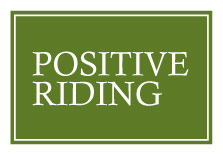Jumping with confidence is a block for many riders at some part in their riding career. It is an area where real experience of training horses and riders for jumping – as well as mindset coaching – is needed. The following example demonstrates how NLP can be built into jumping lessons to develop new behaviours.
Breaking a cycle of lost confidence in horse and rider
Jenny used to love jumping, but a series of incidents had left both her and her mare nervous at the thought of jumping. The horse would sweat and start napping, if they went near the jumps in their schooling field. Of course this made Jenny tense and nervous too and the cycle just escalated.
First, it was important to break the cycle with a change of states – for once the rider has changed their emotional state eg from fear to confidence, the horse will quickly follow. This is a key part of why an instructor can usually ride their pupil’s horse better than they can.
So, as a pre-assessment I ensured that the issue with jumping was not due to back soreness, lameness, poor fitting tack or any other issue with the horse. I was able to assess the rider’s competence, contact and balance on the flat. Therefore, in this situation as an experienced instructor I knew that the jumping could be made safe, enjoyable and appropriate for the horse and rider at their stage of training.
In our first session together I asked Jenny to remember a time when she had really enjoyed jumping – a magic moment. She described it to me and by asking more questions we ‘intensified’ the memory. Then we ‘anchored’ it so that she could bring the memory and feeling back when she needed it. It was easy to see by the way her posture changed and her face lit up… By using it during the lesson she was able to keep the good memory as she came towards a small grid. The horse picked up Jenny’s new found confidence and relaxation, so she also relaxed significantly and we were able to work over trot and canter poles.
Then, as we talked of moving to small jumps, Jenny admitted that she was seeing a horrible image of crashing among poles, which was interfering with the good anchor we had set up. Just 5 minutes later the ‘collapse anchor’ technique to shift the image left Jenny incredulous! ‘I can’t believe it, it’s just gone’ she said!
Try as she would, she couldn’t get it back either….. They finished that session with some low jumps approached in trot and canter, a huge smile on both their faces! This example summarises an important aspect of the relationship between coach and rider. NLP techniques should only be used in the right context and with regard for horse and rider safety. Please beware of working with these techniques with people who are not qualified – or insured – to train riders and their horses in mounted sessions.


